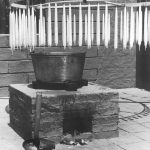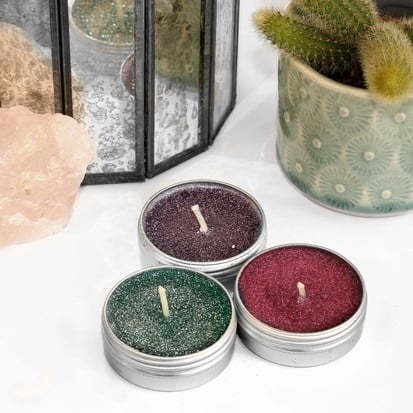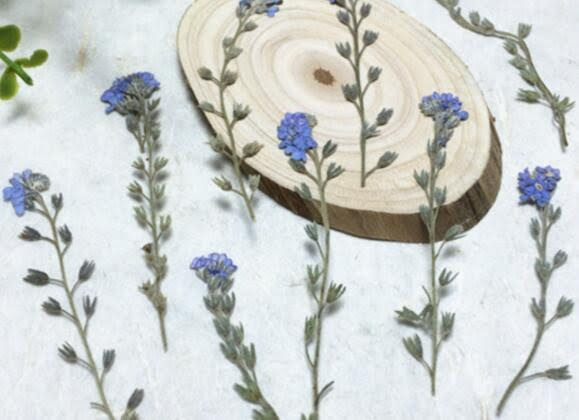Candle making in colonial times was a crucial skill for early settlers. The production of candles was vital for providing light during the dark evenings and played an essential role in daily life. Understanding the importance of candles in colonial times gives us insight into the resourcefulness and innovation of our ancestors.
The history of candle making dates back to ancient times, but it wasn’t until colonial America that it became an integral part of everyday life. Early settlers had to rely on their ingenuity and resourcefulness to create their own light source before the invention of electricity. This led to the development of various techniques and methods for producing candles using materials readily available in their environment.
In this article, we will delve into the fascinating world of colonial candle making, exploring the history, materials, tools, process, usage, challenges, and innovations involved in this essential craft. We will also examine the significant role candles played in colonial society and economy, as well as the enduring legacy of colonial candle making on modern production. Join us on this illuminating journey through time as we uncover the captivating story of candle making in colonial times.
The History of Candle Making
Candle making in colonial times has a rich and fascinating history that dates back to the early settlers in America. The art of candle making can be traced back to ancient times, with evidence of candles being used by the Egyptians, Romans, and Chinese civilizations. However, it was during the colonial period that candle making truly began to take shape as an essential skill for everyday life.
The history of candle making in colonial times can be attributed to the scarcity and high cost of beeswax, which was the preferred material for making candles at the time. As a result, colonists had to come up with alternative methods and materials for producing light sources. This led to the development of tallow candles, which were made from animal fats such as beef or sheep suet.
The process of making tallow candles involved melting the animal fat and then dipping cotton wicks into the liquid fat multiple times until a thick candle was formed. Tallow candles were not only more affordable than beeswax candles but also produced a brighter light, making them a popular choice among colonial households. This innovation marked the beginning of a new era in candle making, paving the way for further advancements in the industry.
Materials and Tools Used in Colonial Candle Making
Candle making in colonial times required specific materials and tools to produce high-quality candles that were an essential part of daily life. The key materials used in colonial candle making included tallow, beeswax, and bayberry wax. Tallow, which was derived from animal fat, was the most commonly used material due to its affordability and availability.
Beeswax, on the other hand, was the preferred choice for wealthier colonists due to its pleasant aroma and brighter flame. Bayberry wax was also used, especially in New England, but it was more difficult to obtain and therefore less common.
Materials Used in Colonial Candle Making
- Tallow
- Beeswax
- Bayberry wax
In addition to these materials, colonial candle makers utilized various tools to aid in the production process. These tools included metal molds for shaping the candles, wicking material made from cotton or flax, and a double boiler for melting the waxes.
The use of molds allowed for the creation of uniform and cylindrical candles, while the wicking material determined the quality of the candle’s burn. Additionally, a dipping frame was used for creating dipped candles by repeatedly dipping wicks into melted wax.
Tools Used in Colonial Candle Making
- Metal molds
- Wicking material (cotton or flax)
- Double boiler
- Dipping frame
The combination of these materials and tools allowed colonial candle makers to produce a vital commodity that illuminated homes and provided light during dark evenings. This traditional craft required skill and precision to ensure that candles were of a high standard and could effectively serve their purpose within colonial households. The significance of these materials and tools in colonial candle making highlights the resourcefulness and ingenuity of early American settlers as they navigated their daily lives with limited resources.
The Process of Candle Making in Colonial Times
Candle making in colonial times was a crucial activity that provided light for households, churches, and businesses before the invention of electricity. The process was laborious but essential, and it required specific materials and tools to create the finished product. Here is a step-by-step guide to understand how colonists made candles during this period.
1. Preparation of materials: The first step in candle making was to gather the necessary raw materials. Tallow, a byproduct of animal fat, was the most common material used for candle making in colonial times. Beeswax was also utilized, although it was more expensive and often reserved for ceremonial or decorative candles.
2. Rendering the tallow: Once the tallow had been obtained from animals such as cattle or sheep, it needed to be rendered to remove impurities. This involved heating the tallow until it melted into a liquid form, which could then be poured into molds to solidify.
3. Wicking the candles: Wicks were made from braided cotton or flax fibers, which were crucial for providing a steady flame when the candle was lit. The wick would be dipped into the melted tallow multiple times to build up layers of wax around it, creating the body of the candle.
4. Molding or shaping the candles: After several dips in the melted tallow and allowing each layer to harden, the candle would take on its final shape. If cylindrical candles were desired, they would be repeatedly dipped until they reached the desired size. For pillar candles or other shapes, molds made of metal or clay were used to contain the liquid tallow until it solidified.
5. Trimming and storing: Once completed, the finished candles would need their wicks trimmed and any imperfections smoothed out before being stored for use.
Candle making in colonial times required patience and precision, but it contributed significantly to illuminating homes and communities during an era without electricity or gas lighting technology.
Candle Making in the Colonial Home
Candle making in colonial times was not only a necessity but also a significant part of everyday life in the colonial home. Candles were one of the primary sources of artificial light, especially after sunset, and they played a crucial role in various aspects of colonial life.
In the colonial home, candles served as a means to illuminate the interior spaces during the evening hours. They were used for tasks such as reading, sewing, and cooking after dark. Additionally, candles were also utilized in religious ceremonies and as a part of social gatherings and events within the community.
The significance of candle making was evident in its usage throughout the colonial home. The process of making candles was labor-intensive and required specific materials such as tallow or beeswax, as well as tools like molds and wicking. Due to the time and effort involved in producing them, candles were considered valuable commodities within the household.
Candle making in the colonial home was not without its challenges. The availability of raw materials, such as beeswax and tallow, could fluctuate depending on factors like weather conditions and access to resources. Innovations in candle making methods were born out of these challenges, leading to advancements in production techniques that would eventually impact modern-day candle manufacturing processes.
| Aspect | Description |
|---|---|
| Importance | Candles were one of the primary sources of artificial light in colonial homes. |
| Usage | Candles were used for tasks such as reading, sewing, cooking, religious ceremonies, and social gatherings. |
| Challenges | Ambiguity over raw material availability led to challenges that prompted innovations in candle making. |
Challenges and Innovations in Colonial Candle Making
During colonial times, candle making was an essential skill for households and businesses, as it provided a reliable source of light after the sun had set. However, the process of making candles posed several challenges, especially in the absence of modern technology and machinery. In this section, we will explore some of the challenges faced by colonial candle makers and the innovative solutions they developed to overcome these obstacles.
Challenges Faced by Colonial Candle Makers
One of the primary challenges in colonial candle making was sourcing high-quality materials. Tallow, beeswax, and bayberry wax were commonly used to make candles, but obtaining these raw materials could be difficult, especially in regions with limited access to livestock or beekeeping resources. As a result, candle makers had to be resourceful and often relied on local suppliers for their raw materials.
Another challenge was the labor-intensive nature of candle making. The process involved rendering tallow or beeswax, dipping wicks into the melted wax repeatedly, and then allowing the candles to cool and harden. This repetitive process required patience and physical endurance, making it a demanding task for colonial candle makers.
Innovations in Colonial Candle Making
To address these challenges, colonial candle makers developed innovative techniques to improve their efficiency and productivity. One such innovation was the use of molds to shape candles instead of hand-dipping them individually. By pouring melted wax into molds, candle makers could create uniform and standardized candles more quickly than traditional dipping methods.
Additionally, some colonial entrepreneurs experimented with alternative sources of wax, such as animal fats and vegetable oils, to supplement or replace traditional tallow and beeswax. These innovations allowed candle makers to adapt to local conditions and expand their production capabilities.
These challenges helped fuel a culture of experimentation and innovation in colonial candle making that continues to influence modern techniques today. By overcoming these obstacles through ingenuity and adaptation, colonial candle makers laid the foundation for the enduring legacy of this essential craft.
The Role of Candles in Colonial Society and Economy
Candle making played a crucial role in colonial society and economy, with candles serving as one of the primary sources of lighting during this time period. In the absence of electricity, candles were essential for providing light in homes, churches, and other public spaces after sunset. They were also used for ceremonies, religious observances, and social gatherings, highlighting their significance in colonial society.
In colonial times, candles were not only used for practical purposes but also held symbolic and cultural significance. They were often associated with religious rituals and represented purity and spirituality. The production and trade of candles also contributed to the colonial economy, with many households engaging in candle making as a source of income. Additionally, candlemakers formed guilds and associations to regulate the quality and pricing of candles, further demonstrating their economic impact.
One notable aspect of candle making in colonial times was the use of different materials to produce candles. Tallow, derived from animal fat, was commonly used for producing inexpensive candles, while beeswax was reserved for higher-quality candles often used in religious ceremonies or by wealthier households. This differentiation in materials reflected social hierarchies and economic disparities present in colonial society.
Overall, the role of candles in colonial society and economy was multifaceted, encompassing both practical illumination and cultural symbolism. The production and trade of candles contributed significantly to the colonial economy, while their usage held deep cultural and religious significance for the people of that era.
| Aspect | Description |
|---|---|
| Practical Use | Candles provided essential lighting after sunset in homes and public spaces. |
| Economic Impact | Candle production and trade contributed to the colonial economy. |
| Social Symbolism | Candles held cultural and religious significance beyond their practical use. |
The Legacy of Colonial Candle Making
Traditional Materials vs. Modern Alternatives
In colonial times, candles were primarily made from animal fats such as tallow and beeswax. These materials were readily available and affordable, making them ideal for candle making. However, modern candle production has evolved to include a wider range of materials such as paraffin wax, soy wax, and palm wax. While traditional materials are still used in some artisanal candle making, the availability of modern alternatives has expanded the variety of candles available in the market.
Technological Advances in Candle Making
The process of making candles in colonial times required manual labor and basic tools. With the advent of technology, modern candle production has become more efficient and streamlined. The invention of automated candle making machines and equipment has revolutionized the industry, allowing for mass production to meet consumer demand.
Sustainability and Environmental Considerations
In colonial times, the focus was on utilizing natural resources such as animal fats for candle making. Today, there is a growing emphasis on sustainability and environmental responsibility in modern candle production. This has led to the development of eco-friendly waxes and recycled packaging materials to reduce the carbon footprint of candle manufacturing.
Reflecting on the enduring legacy of colonial candle making, it is clear that its impact on modern candle production continues to shape the industry. As consumer preferences evolve and technological advancements progress, we can expect to see further innovations that build upon the foundations laid down during colonial times.
Conclusion
In conclusion, the legacy of candle making in colonial times remains significant and enduring. The importance of candles in colonial society cannot be overstated, as they played a crucial role in providing light, warmth, and even a source of trade and commerce. The history of candle making dates back centuries, and the materials and tools used during colonial times paved the way for innovations in modern candle production.
The process of candle making in colonial times was meticulous and labor-intensive, with settlers using readily available resources such as tallow or beeswax to create their own light sources. This practice not only contributed to the self-sufficiency of colonial households but also provided opportunities for creativity and innovation. While challenges such as inconsistent quality and limited availability of materials were prevalent, colonial candle makers found ways to overcome these obstacles through experimentation and adaptation.
The enduring legacy of candle making in colonial times is evident in its impact on modern candle production. The techniques, tools, and even the societal significance of candles can be traced back to this period in history.
Today, candle making continues to be a popular hobby and industry, with many enthusiasts embracing traditional methods inspired by the practices of colonial settlers. Overall, the heritage left by colonial candle makers has truly stood the test of time, leaving an indelible mark on our modern world.
Frequently Asked Questions
How Do You Make a Colonial Candle?
Making a colonial candle involves first melting the wax, then adding essential oils or scent. The wick is then dipped repeatedly in the wax until the desired thickness is reached.
How Were Candles Made Historically?
Historically, candles were made by dipping a wick repeatedly in melted tallow or beeswax to build up layers, or by pouring the molten substance into molds and allowing it to cool.
What Tools Did Colonial Candle Makers Use?
Colonial candle makers used tools such as a dipping frame, which held multiple wicks at once for efficient dipping, and molds for creating shaped candles. They also used pots for melting wax and various hand tools for shaping and trimming the finished candles.

Welcome to my candle making blog! In this blog, I will be sharing my tips and tricks for making candles. I will also be sharing some of my favorite recipes.





